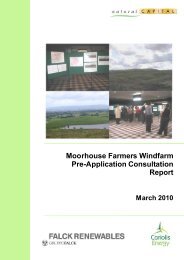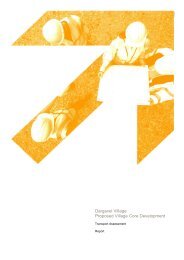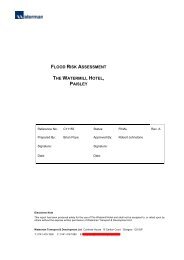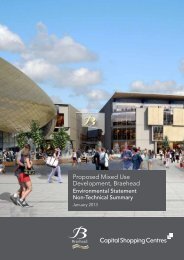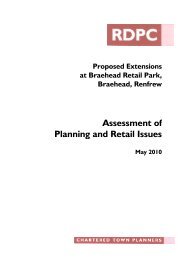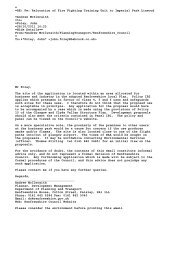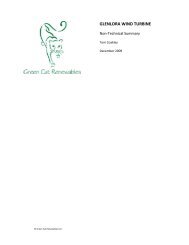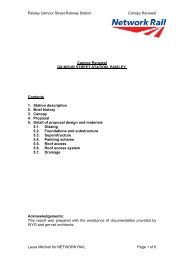Supporting documents - Renfrewshire Council
Supporting documents - Renfrewshire Council
Supporting documents - Renfrewshire Council
Create successful ePaper yourself
Turn your PDF publications into a flip-book with our unique Google optimized e-Paper software.
Proposed Mixed Use Development, Braehead: Socio-Economic Impact Report<br />
Economic Context<br />
3.4 The residential population of the local area in 2010 amounted to 763,100 of<br />
which 170,300 were resident in <strong>Renfrewshire</strong> (22.3%). 1 The population of<br />
<strong>Renfrewshire</strong> in 2001 was 172,900 and has fallen slightly by 2,600 people<br />
(1.5%) in the period 2001-2010; this compares with the positive growth rate for<br />
Scotland and Great Britain of 3.1% and 5.3% respectively. 2<br />
3.5 Total employment in the labour catchment area fell by 19,340 (4.1%) in the<br />
period 2001-2011 (Table 3, Appendix 1). The greatest decrease in the<br />
percentage of employment was in <strong>Renfrewshire</strong> (11.6%) followed by Glasgow<br />
City with a decrease of 9,831 people (2.5%).<br />
3.6 The employment structure of the labour catchment area is dominated by the<br />
service sector, which accounts for 87.9% (at 2011) of employment, a rise of 3%<br />
from 2001. However, this growth is below the average for Great Britain at<br />
approximately 4.6% over the same time period (Table 4, Appendix 1). Despite<br />
an increase in the proportion of service sector workers in the labour catchment<br />
area, (largely due to the workforce of other sectors shrinking) the quantity of<br />
service sector employees actually fell by 2,546 (0.6%) between 2001 and<br />
2011. Within the service sector, the retail sector accounts for 13.5% of total<br />
employment, this is lower than the Scotland (“Regional”) and GB averages<br />
(14.7% and 16.1% respectively). Health (15.7%), property and business<br />
activities (14.6%) and financial intermediation (12.1%) represent the three<br />
other largest sectors of employment.<br />
3.7 The most significant sector decline in employment terms has been<br />
manufacturing which decreased by 37.5% in the period 2001-2011, reducing its<br />
share of the workforce from 9.2% to 6% (Table 4 and 5, Appendix 1). Public<br />
administration and defence experienced an 18.8% decline in employment, from<br />
7.7% of the workforce in 2001 to 6.5% in 2011. This reflects the trend for<br />
Scotland as a whole with a national decline in manufacturing of 41.2% in the<br />
same period; however public administration saw a much smaller decrease in<br />
the proportion of its workforce at 5.5%. The fastest growth sector was financial<br />
and insurance, scientific and technical (57.2%) increasing its share of the<br />
workforce from 6.7% to 12.1%, this is however well below the average for<br />
Scotland which saw an increase of 103.5% in the same period. Although<br />
employment within wholesale and retail trades fell by 12.8% within the local<br />
area over the last decade, nationally this sector experienced a decline in<br />
employment of 15.2%.<br />
3.8 In the period 1997-2007, the number of VAT-registered firms increased by<br />
13.7% across the labour catchment as a whole, a similar rate to Scotland<br />
(15.5%) but below the average for Great Britain (21.3%). The growth rate in<br />
<strong>Renfrewshire</strong> alone was 17.3% (Table 6, Appendix 1).<br />
1 Mid-year population estimates, ONS<br />
2 Does not account for regional boundary changes<br />
3366706v3 P9



